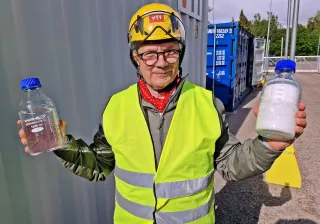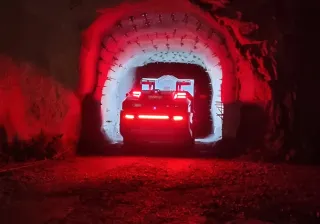User experience can drive innovation, but if you’re looking for epoch-making innovation, don’t look only at what the users want.
In our user research work, we talk a lot to professional users. We interview them on what they do with a view to wrapping our findings into product and service concepts. The irony of our work is that even though user experience data is invaluable, if we really want to come up with a big new domain disruptor concept, we’re better off not going along what the users wish for.
Hands on learning in the Deep South
We were a few years back on the East Coast of the US doing fieldwork for Konecranes. The plan was to interview local crane operators, as part of a core-task analysis to discover the general demands of their work. These findings would eventually fold into a prototype system for a remote operator station, delivered through our InnoLeap approach.
Down at the wharf side, they can be a bunch of tough guys, and not keen on being interviewed by Finnish scientists. After a few false starts, we decided to bin the interview plan and settle for small talk. Although not a Finnish specialty, once we’d introduced the topic of last night’s ball game, we quickly found ourselves in full conversation and sharing mode.
In terms of developing an empathetic understanding of the users, we were well on our way. These crane operators knew exactly what they were doing and why. After years on the job, they had an intuitive nose for their operations making them able to sniff out potential problems and analyze the safety of their operations.
However, once we started asking them for ideas on how they could do things more easily, more safely and more efficiently, for example through automated operations, they were generally stumped. In most cases, we find that users are too closely wedded to their current systems and practices to be intuitively able to even conceive of a radical new approach. On top of that, users are not necessarily up to speed with the whole gambit of technical possibilities or trends that the future has on offer.
Intelligent towing for ghost ships
As another case in point, the InnoLeap team worked with Rolls-Royce Marine, to develop new concepts for future ship bridges. One important user study finding was the need for tugboat operators escorting large ships to constantly anticipate the movement of the bigger ships being towed, especially in turbulent seas. Massive cargo ships turn slowly so tugs need to assist in an anticipatory way before the big vessel gets into trouble.
Since these ships of the future may be autonomous, or ghost ships, as some of the users called them, the design goal had to be remote but highly intelligent. Taking into account the user findings and design goals, we came up with, for example, one concept solution called Intelligent Towing, which involved a direct data transfer from the big ship to the digital window head-up display of the tugboat. Information included the speed, turning rate, and distance between the two vessels, as well as the rate of strain directed on the towline.
How to address the irony of user research and radical innovation
The developed concepts and their visualizations scored a very high wow factor from the industry as well as technology pundits and even mainstream media. The secret to success from our side was to involve the user experience perspective only once we’d achieved what we call the fuzzy front end of design. This is the time when we’re free to come up with all kinds of initial concepts, even bordering on the absurd. Later we’ll have a chance to temper these ideas against the true user experience with a view to one day turning ideas into real marketable solutions.
This was also our intention in the fieldwork with Konecranes. At the end of our visit with the wharfies, we gave a hearty thank you and talked of a possible return visit to do some evaluations of our designs – and maybe even catch another ball game.





